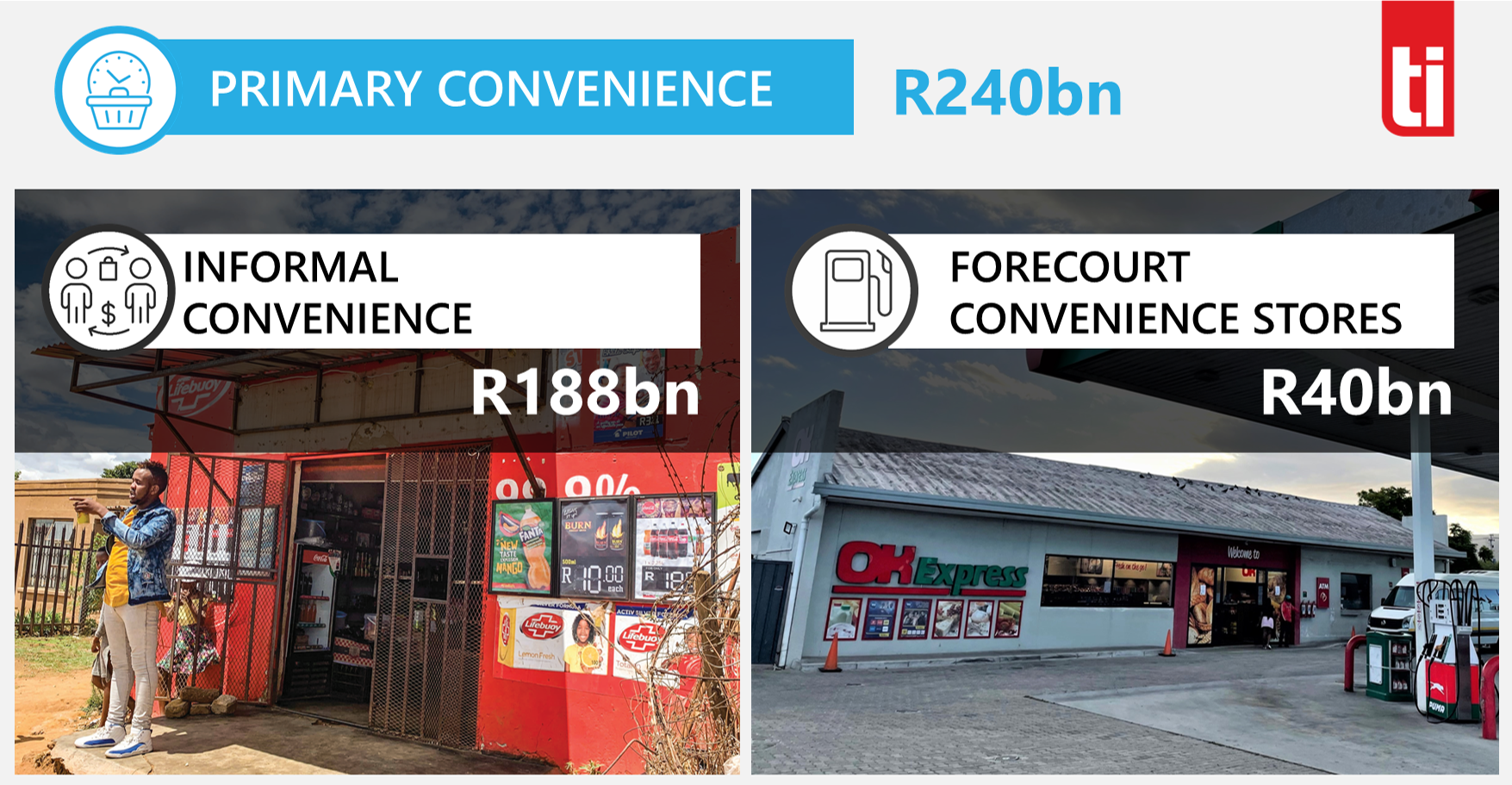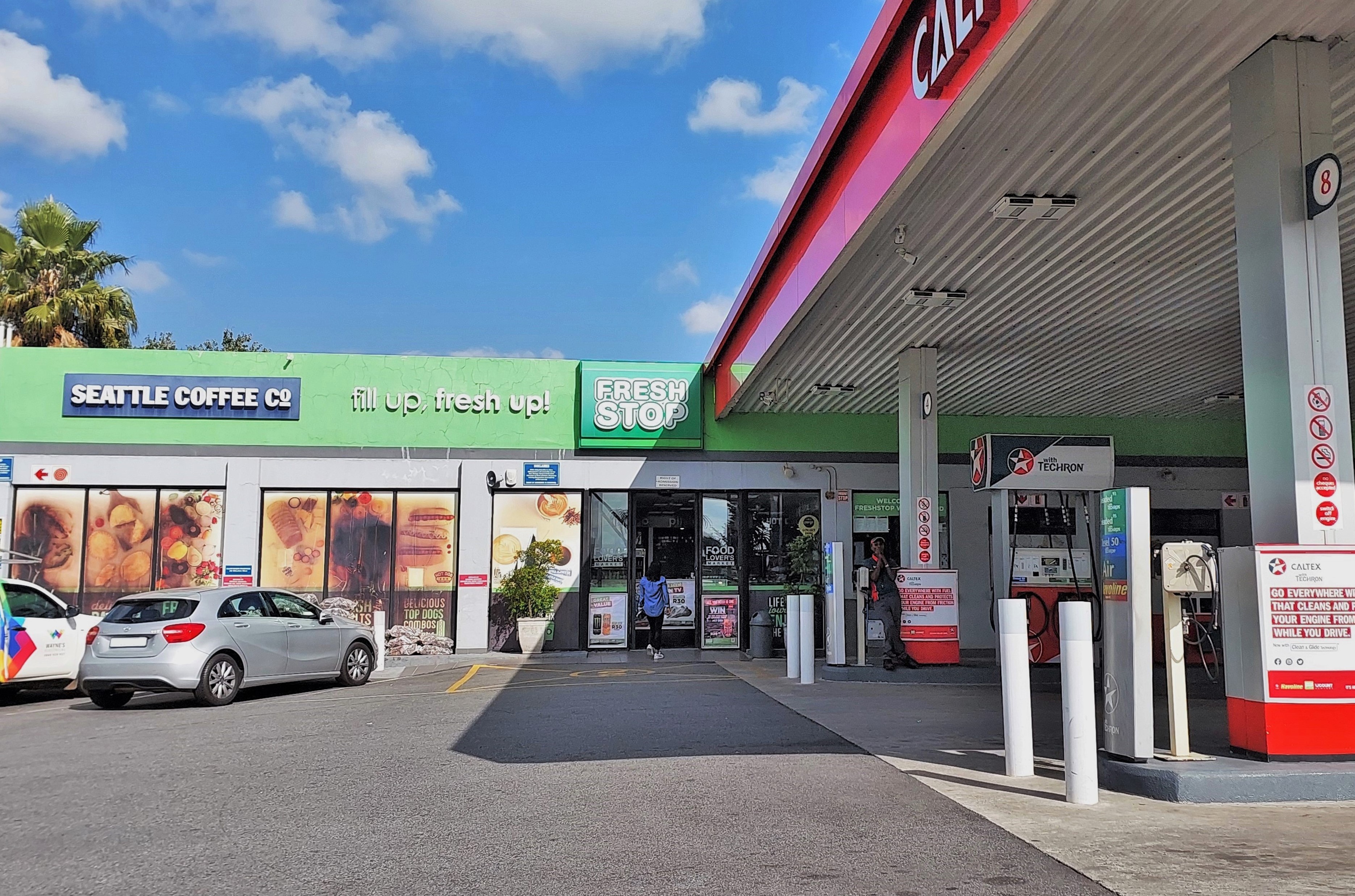Convenience retail is an unstoppable force in South Africa’s consumer goods market. A new report from Trade Intelligence examines the size of the prize for retailers and brands, and the forces shaping this dynamic and rapidly evolving sector.
The local tearoom or café was once the cornerstone of suburban South Africa, much as the spaza or the small local super has been in the townships. South Africa has a long history with convenience stores. Things have changed though. As we’ve become more mobile – either in private vehicles or minibus taxis – we do more and more of our convenience shopping at petrol station forecourt stores. And the big supermarket chains, recognising our increasing demand for convenience, have moved into the convenience space – by making the shopping experience itself more convenient, experimenting with smaller-format neighbourhood stores, and offering home delivery.

South Africa’s primary convenience market is estimated at R240bn annually. Of this, the informal independent trade is valued at R188bn, with forecourt convenience stores worth an estimated R40bn. Convenience is currently one of fastest growing channels, behind online shopping, and expanded +6.7% in 2022. The convenience sector has never been more competitive, more crowded, and more confusing. To help us make sense of it all, a new report from Trade Intelligence, the 2023 Forecourt and Convenience Report, examines the drivers of the convenience trend for South African consumers, and explores the ways in which retailers are responding, with a focus on the growing forecourt market.
The Forecourt and Convenience Report provides insights into the sector from the perspective of grocery shoppers as they search for convenience in what, where, and how they shop, and the retailers who serve these shoppers, with a focus on forecourt convenience. “The report will help suppliers broaden their understanding of what ‘convenience’ means to shoppers, grasp the size of the market, identify growth opportunities in forecourt retail, and leverage local and international trends in the convenience retail space,” says Trade Intelligence analyst, Nicola Allen.
The size of the prize
According to data, sourced in collaboration with Lightstone, Trade Intelligence reported that there are now around 4,500 forecourts in South Africa, with around 65% estimated to have convenience stores. The big retail brands have proven a major disruptor in forecourt convenience. Retail partnerships at forecourts have increased +69% over the last five years to 745 stores at forecourts in 2022. And while 17% of forecourts have a retail partner store, our research suggests that as many as 76% of motorists or commuters now shop at a forecourt with a grocery retailer partnership. South Africa’s biggest retail player in this space is currently Food Lover’s Market, whose FreshStop brand is found at 342 Caltex forecourts. Other retailers in the forecourt market include Pick n Pay Express whose footprint at BP forecourts has increased +60% over five years, SPAR Express at Shell, OK Express at Puma forecourts, and Woolworths Foodstop at Engen.
The sector is also impacted by rising trends in retail more broadly. The technologies – from machine learning and surveillance technologies – that are changing retail globally will speed up checkout times in forecourts, with an impact on the impulse purchases that these stores depend on. Personalised promotions and loyalty programmes – also a product of the new technologies – will become increasingly important to retailers as the space becomes more competitive. And as increasing scale, formalisation and collaboration establish more efficient supply chains in the informal convenience store market, these traditional South African retailers will exert increasing pressure on the major supermarkets and on forecourt convenience alike.
What’s the future for forecourt convenience?
Globally, over 40,000 new convenience outlets will open over the next five years. And a new cohort of consumers is starting to shop there. While Generation Z are more likely to make forecourts their destination for a specific mission or their scheduled weekly/monthly shop, 37% of them also buy food items to use later compared with 29% of other shoppers. And as forecourts provide more electronic vehicle (EV) charging stations, shoppers may be looking to occupy their time for longer in the forecourt store – which will change the demands on the format, and lead to new opportunities for retailers and brands alike.
About Trade Intelligence
Trade Intelligence is South Africa’s leading source of consumer goods retail research, insights and capability-building solutions, focusing on the industry’s corporate and independent retailers and wholesalers. We are the trusted voice of the sectors in which we operate, aggregating information to amplify knowledge, grow capability, and enable collaboration that drives profitable trading relationships and sustainable sector growth.

